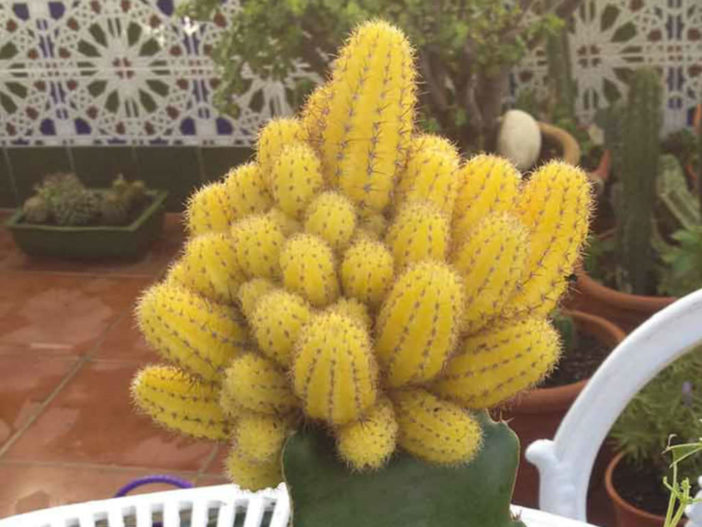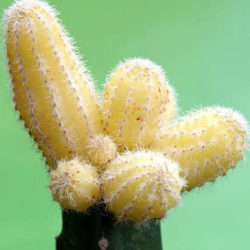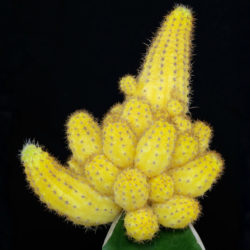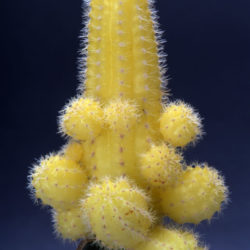Scientific Name
Echinopsis chamaecereus 'Lutea'
Common Name(s)
Yellow Peanut Cactus, Yellow Peanut
Synonym(s)
Echinopsis chamaecereus f. lutea, Chamaecereus sylvestris f. lutea, Chamaecereus sylvestris f. aurea
Scientific Classification
Family: Cactaceae
Subfamily: Cactoideae
Tribe: Trichocereeae
Genus: Echinopsis
Description
Echinopsis chamaecereus 'Lutea' is an attractive cactus with many crowded, finger-like, yellow stems. Because it lacks chlorophyll, it can survive only if grafted onto a green cactus rootstock, usually the adaptable Selenicereus undatus. The fleshy stems can grow up to 6 inches (15 cm) long and up to 0.5 inches (1.2 cm) in diameter. They have 8 to 10 ribs and 10 to 15 soft bristles per areole.
Origin
Echinopsis chamaecereus 'Lutea' is a form of Echinopsis chamaecereus selected for the yellow stems.

Hardiness
USDA hardiness zone 10a to 11b: from 30 °F (−1.1 °C) to 50 °F (+10 °C).
How to Grow and Care
Peanut Cactus needs a well-draining potting mix. Water the plant thoroughly until water comes through the pot's holes, and let the soil dry at least halfway down the pot before watering again. In winter, decrease or withhold water. The plant will look shriveled and stems can take on a reddish tinge, but the Peanut Cactus will plump up again and return to its normal color in spring.
This cactus grows well in hanging baskets or shallower, 4-inch (10 cm) nursery containers because it is shallow-rooted. Hybrids can take deeper pots. It is difficult to transplant older clumps of Peanut Cactus because the stems break apart so easily. Fertilize the cactus once a year during the growing season using a balanced fertilizer at half the recommended strength. In areas with hot, dry summers, grow Peanut Cactus in areas with partial shade. In areas with cool summers or temperate climates, grow it in full sun.
Learn more at How to Grow and Care for Echinopsis.
Links
- Back to genus Echinopsis
- Succupedia: Browse succulents by Scientific Name, Common Name, Genus, Family, USDA Hardiness Zone, Origin, or cacti by Genus
Photo Gallery
Click on a photo to see a larger version.


